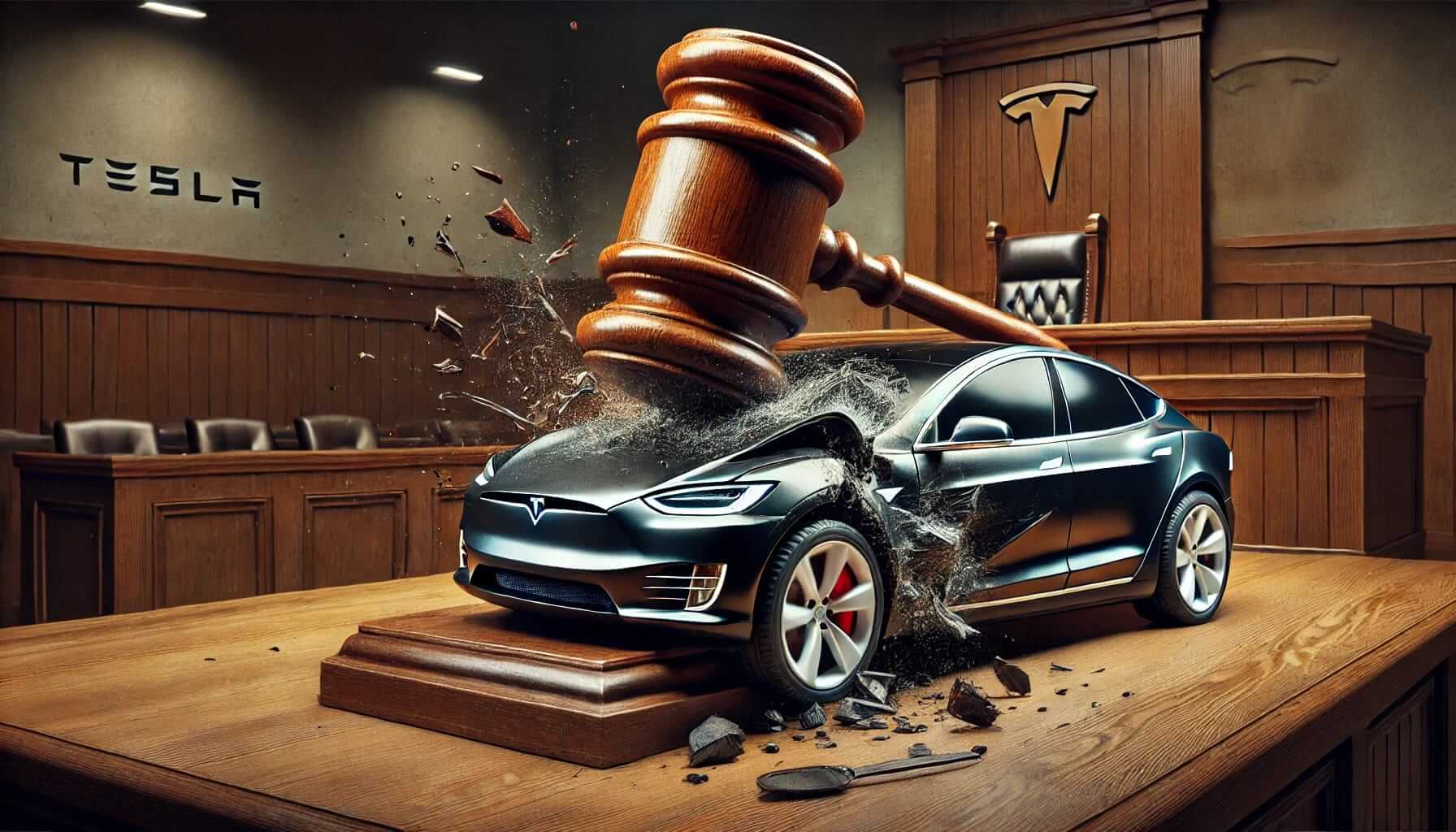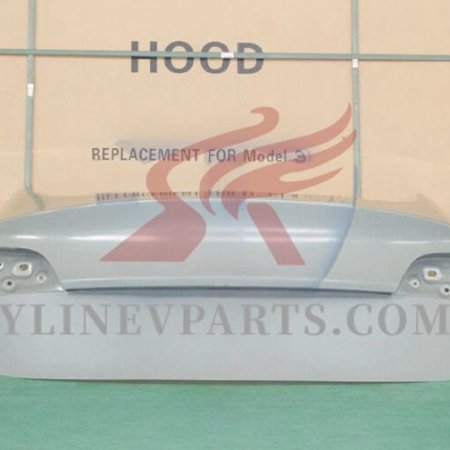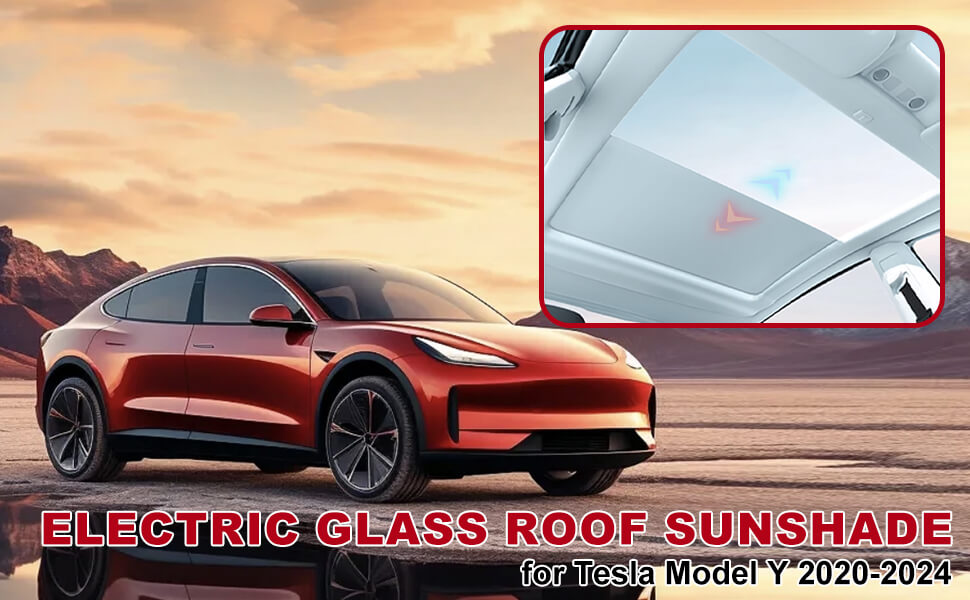Introduction
Tesla’s pioneering electric vehicles (EVs) have undeniably reshaped the automotive industry, blending sustainability with cutting-edge technology. Yet, behind this innovation lies a contentious aspect of Tesla’s operations: its tightly controlled repair and parts ecosystem. While this strategy reinforces Tesla’s dominance and ensures high standards, it also ignites debates around consumer rights, affordability, and market competition.
For many Tesla owners, this policy translates to a series of frustrations. High repair costs are a common concern, driven by the limited availability of genuine parts and the lack of alternative repair options. The reliance on Tesla’s authorized service network often leads to long wait times for appointments, adding another layer of inconvenience. Independent repair shops, which traditionally offer cost-effective solutions, are frequently shut out, unable to access the proprietary tools and parts necessary to work on Tesla vehicles.
From Tesla’s perspective, the rationale is rooted in quality assurance. By controlling repairs and parts, the company argues it can uphold safety standards and ensure optimal vehicle performance. This approach minimizes risks associated with subpar parts or incorrect repairs, a critical consideration for the advanced technology powering Tesla cars.
The debate raises critical questions: Should consumers have greater autonomy over their vehicles after purchase? What role does competition play in driving down costs and improving service quality in the EV repair landscape? And most importantly, how can manufacturers like Tesla strike a balance between safeguarding quality and fostering a fair, competitive ecosystem?
As EV adoption grows, these discussions will play a pivotal role in shaping the future of automotive repair rights and policies, setting precedents not just for Tesla but for the entire industry.
As the debate intensifies, it intersects with the expansive Right to Repair movement—a global crusade for equitable access to repair tools, replacement parts, and essential information across diverse industries. For Tesla owners, unraveling the nuances of this policy becomes pivotal. It’s not merely about cost; it touches upon convenience, autonomy, and the satisfaction that comes with long-term vehicle ownership.
In this article, we will dissect Tesla’s repair and parts policy, shedding light on the intricate web of financial burdens and logistical hurdles it imposes. What challenges do these restrictions pose for both consumers and independent repair professionals? Who ultimately reaps the benefits of these limitations? We’ll also delve into the innovative solutions proposed by consumer advocacy groups, offering a glimpse into the evolving landscape of automotive repair and what it could mean for the future of Tesla ownership.
Why This Matters to Tesla Owners
- Skyrocketing Repair Costs:Tesla’s dominance over its repair ecosystem often translates to substantial financial burdens for owners, especially when unexpected maintenance arises.
- Restricted Choices:With only a handful of independent repair shops authorized to handle Tesla vehicles, owners find themselves trapped in a narrow field of options, limiting their ability to seek competitive pricing or alternative solutions.
- A Broader Issue: Tesla’s repair policy serves as a microcosm of larger challenges plaguing the automotive industry—raising critical questions about fair competition, consumer autonomy, and the balance of power between corporations and their customers.
In the sections ahead, we’ll unravel the intricacies of Tesla’s repair model, examining its far-reaching consequences for consumers and its ripple effects across the automotive industry. Are you a Tesla owner navigating costly maintenance? A repair shop owner grappling with limited access to parts and tools? Or perhaps an automotive enthusiast keen on understanding the evolving landscape of EV repair? Regardless of your perspective, this discussion offers vital insights into the future of vehicle repair in an electrified world.
Who Gains from Tesla Limiting Access to Repair and Parts?
Tesla’s approach to maintaining a firm grip on repair services and parts has shaped a distinctive ecosystem. While some stakeholders undoubtedly reap significant advantages, others face mounting hurdles. Let’s unpack the dynamics and identify the groups that stand to gain the most from these exclusive policies—and what it means for everyone else involved.
1. Tesla Inc. Itself
Tesla Inc. stands as the primary beneficiary in a landscape where repair access is tightly controlled. By keeping repairs and parts exclusively within its own network of authorized service centers, Tesla effectively ensures that it retains a large share of the revenue from post-sale services. This strategic move is not just about profit; it’s about control—Tesla captures a substantial portion of the income generated from diagnostics, repairs, and part replacements, fortifying its bottom line.
But it’s not just about the money. Tesla’s monopoly on repairs serves to safeguard its brand image and uphold its rigorous quality standards. With repairs restricted to certified personnel, Tesla guarantees that only genuine parts are used, and the latest tools and technologies are deployed. This reduces the risk of shoddy work or subpar repairs that could tarnish its reputation—an essential aspect in a market where trust is everything.
Moreover, Tesla has cleverly designed its ecosystem to lock customers in, thanks to its proprietary software and diagnostic systems. Many repairs, particularly those that involve software updates or resets, require direct access to Tesla’s tools. This creates an almost insurmountable barrier for independent repair shops, further consolidating Tesla’s dominance in the repair and service sector. Independent businesses are left with limited options, while Tesla retains near-total control over the after-sales experience.
2. Tesla-Authorized Service Centers
Tesla-authorized service centers stand as the second major group reaping the rewards of Tesla’s repair policies. With a firm grip on the repair landscape, these centers hold a unique advantage: they are the only locations approved to service Tesla vehicles. This exclusivity gives them the upper hand, enabling them to charge premium prices for both parts and services, without the constant threat of losing customers to more affordable, independent repair shops.
The real kicker? This monopolistic setup works particularly well in areas where Tesla cars are on the rise, but authorized service centers remain few and far between. In these high-demand regions, the limited availability of repair options allows service centers to further capitalize on their position. The result? A clear surge in profits, driven by the very policies that keep independent repair shops out of the equation.
By keeping competition at bay, Tesla not only secures its own dominance in the repair market but also ensures its authorized centers enjoy a steady stream of revenue, all while charging higher rates for their services. It’s a win-win for the centers—and a model of efficiency for Tesla.
3. Shareholders and Investors
Tesla’s tight control over repair policies is more than just a way to maintain its brand—it’s a key driver of the company’s robust revenue model, one that has captured the attention of shareholders and investors alike. By locking in a steady stream of income from repairs and maintenance, Tesla has added an extra layer of financial stability to its already diverse business, which includes vehicle sales and energy products. It’s a move that ensures consistent cash flow, even in volatile markets.
This strategy ties seamlessly into Tesla’s broader vision of vertical integration, a business model that Wall Street has long applauded. Investors recognize that Tesla’s repair ecosystem isn’t just a way to keep cars running smoothly—it’s an additional revenue stream that strengthens the company’s financial foundation. As a result, Tesla’s grip on both product sales and after-sales services gives investors confidence in the company’s long-term growth prospects.
For shareholders, Tesla’s dominance in the repair and service sector is a sign of financial resilience, a cornerstone of the company’s overall growth trajectory. With its ever-expanding network and innovative approach, Tesla continues to attract investment, solidifying its position as a financial powerhouse.
4. OEM (Original Equipment Manufacturer) Parts Suppliers
OEM parts suppliers are yet another group that thrives under Tesla’s restrictive repair policies. With Tesla maintaining tight control over its supply chain and limiting access to authorized service centers, these suppliers enjoy a steady demand for their parts. The lack of competition from aftermarket manufacturers ensures a continual flow of orders, with little to no threat of cheaper alternatives cutting into their market share.
What’s more, this limited competition gives OEM suppliers the power to keep prices high. With no readily available substitutes, they can command premium rates for their products, effectively maximizing their profitability. It’s a model where supply is dictated by Tesla’s exclusive partnerships, and demand is fueled by the company’s restrictions on parts access. For these suppliers, it’s a business environment where consistency and high margins are the norm.
Who Loses from Tesla Limiting Access to Repair and Parts?
Tesla’s restrictive repair and parts policies may offer advantages to the company and its approved partners, but the ripple effects are felt widely by several other key players. Consumers, in particular, face increased costs, limited access to parts, and fewer options for repair services. Independent repair shops are similarly affected, unable to compete on a level playing field due to Tesla’s exclusive control over crucial repair resources. This creates a distorted market that limits consumer choice and raises questions about the fairness of such practices. The broader automotive repair industry, once diverse and competitive, finds itself constrained by these monopolistic tactics, prompting heated debates over consumer rights, market fairness, and the broader implications for automotive service standards. In the end, while Tesla’s policies may strengthen its bottom line, they also risk alienating a significant portion of the market—those who believe in the power of choice and fair competition.
1. Tesla Owners: Paying the Price for Exclusivity
Tesla owners, while enjoying the status of driving one of the most innovative electric vehicles on the market, often find themselves bearing the brunt of the company’s restrictive repair policies. The allure of owning a Tesla—its eco-friendly technology, cutting-edge design, and the prestige that comes with it—can be overshadowed by the challenges posed by its repair ecosystem. For many, the downsides become hard to ignore:
- High Repair Costs: Tesla owners frequently face hefty repair bills, with services often restricted to Tesla-authorized centers. These authorized locations command premium prices, and without the option of independent repair shops offering competitive rates, owners find themselves with few alternatives for cost savings. In many cases, the cost of a simple fix can feel more like a luxury than a necessity.
- Long Wait Times: In areas where the number of Tesla owners has surged, service centers struggle to keep up. Long wait times for appointments have become a common complaint. When there’s a backlog of repairs and maintenance needs, getting timely service becomes a challenge—especially when your car’s needs are urgent. Tesla owners often find themselves stuck waiting for weeks, a frustrating reality for those accustomed to more flexible service options.
- Limited Accessibility: Perhaps the most glaring issue for Tesla owners is the geographical disadvantage they face, particularly in rural or remote areas. With a limited number of authorized service centers scattered across the country, owners in less populated regions often have to travel long distances just for routine maintenance or to address more serious issues. The lack of nearby service options adds a layer of inconvenience that can turn a simple repair into a logistical nightmare, forcing many to make difficult choices between waiting or enduring long, inconvenient trips.
2. Independent Repair Shops: Locked Out of the EV Market
Tesla’s tightly controlled repair ecosystem doesn’t just affect consumers—it also presents significant barriers for independent repair shops. These businesses, once integral to the automotive repair landscape, are finding themselves shut out of a burgeoning market. Tesla’s policies create a series of hurdles that leave many independent mechanics with limited options and lost opportunities:
- Restricted Access to Parts and Tools: One of the most significant challenges facing independent shops is Tesla’s strict control over its parts and proprietary diagnostic tools. The company severely limits access to genuine Tesla parts and specialized equipment, leaving independent shops unable to perform comprehensive repairs. Without access to these vital resources, shops are forced to either turn away Tesla owners or offer subpar alternatives—often at the risk of damaging their reputation.
- Lack of Training and Certification: Independent mechanics are also at a disadvantage when it comes to the training and certification required to work on Tesla vehicles. Tesla’s service requirements are complex, and without the right certification, independent shops are unable to meet the company’s strict standards. This lack of training further deepens the divide between Tesla’s authorized service centers and independent repair businesses, making it increasingly difficult for the latter to keep up with the evolving demands of electric vehicle (EV) repair.
- Lost Revenue Opportunities: As the popularity of Tesla vehicles skyrockets, independent repair shops are missing out on a growing segment of the automotive repair market. With so many Tesla owners unable or unwilling to travel to authorized service centers, the potential for independent shops to tap into the EV market is substantial. However, Tesla’s restrictive policies shut the door on these businesses, denying them the opportunity to capitalize on what could be a highly profitable niche.
3. The Right to Repair Movement: Facing New Challenges
Tesla’s policies have cast a spotlight on the growing concerns surrounding the Right to Repair movement, which has gained considerable momentum in sectors like electronics but now faces a formidable challenge in the automotive world. Tesla’s restrictive approach to repairs isn’t just a company-specific issue—it reflects broader, systemic problems that could reshape the future of car ownership and repair:
- Consumer Rights Concerns: At its core, the Right to Repair movement is about ensuring that consumers have the freedom to choose how and where their vehicles are repaired. Tesla’s model, with its tightly controlled ecosystem, raises serious questions about consumer rights. By limiting access to parts, tools, and repair information, Tesla forces its customers into a corner, reducing their options and driving up costs. This has ignited a push for legislation aimed at ensuring fair repair access and preventing monopolistic practices that limit choice and affordability for consumers.
- Technological Barriers: Tesla’s reliance on proprietary software and over-the-air updates is another challenge that complicates the repair process. As more automakers follow suit, the barriers to independent repairs will only grow. Unlike traditional vehicles, which can often be diagnosed and repaired with readily available tools and parts, Tesla’s tech-driven approach makes it far more difficult for independent shops or consumers themselves to access the necessary information to fix their cars. These technological hurdles, if unchecked, could become the norm across the industry, leaving consumers at the mercy of a few key players and raising serious concerns about the future of repair autonomy.
4. Aftermarket Parts Industry: Limited Growth Potential
Tesla’s tight grip on its supply chain and repair network has a profound effect on the aftermarket parts industry, quashing the growth potential that thrives in traditional automotive markets. Where other vehicles see a flourishing ecosystem of independent parts manufacturers, Tesla’s restrictive practices are preventing the emergence of competitive alternatives and affordable options for consumers.
- Development of Competitive Alternatives: Independent manufacturers, who are crucial to the success of the aftermarket parts industry, find themselves at a disadvantage when it comes to Tesla vehicles. With limited access to essential parts and design specifications, these manufacturers struggle to produce or distribute components that are compatible with Tesla’s unique systems. Tesla’s control over its supply chain keeps potential competitors at bay, making it difficult for the aftermarket sector to develop alternative solutions for repair and customization.
- Affordable Options for Consumers:The absence of competition in the parts market directly impacts consumers, particularly when it comes to price. Without independent suppliers offering lower-cost alternatives, Tesla’s parts remain expensive. This leaves many owners with limited choices, often forcing them to pay premium prices for basic repairs or replacements. The lack of affordable options limits consumer access to essential vehicle maintenance and prevents them from seeking out more budget-friendly alternatives.
5. The Broader Automotive Industry: A Question of Fairness
Tesla’s restrictive policies aren’t just a challenge for its own owners and repair shops; they could have far-reaching implications for the entire automotive industry. As one of the leading pioneers in the electric vehicle (EV) sector, Tesla’s influence is undeniable—and its approach to repair and parts distribution sets a precedent that other automakers may follow. This raises significant questions about the future of vehicle repair, competition, and innovation in the broader market.
- Reduced Competition: If other manufacturers take a page from Tesla’s book and impose similar restrictions on parts access and repairs, the consequences could be severe. The repair industry, which relies on competition to keep costs fair and services efficient, may be left with fewer options. A monopolized landscape could emerge, where only authorized service centers dominate, leaving independent shops and consumers with limited freedom and skyrocketing prices. In this scenario, consumers would lose access to affordable and varied repair solutions, and the diversity that fuels competition in the automotive market would dwindle.
- Innovation Stagnation: The automotive repair sector, much like any industry, thrives on innovation—especially when independent professionals and aftermarket parts suppliers can actively participate in developing new technologies and solutions. However, Tesla’s restrictive practices could severely hinder that innovation. Without the input and creativity of these independent entities, advancements in vehicle maintenance and repair technologies could slow to a crawl. The industry’s ability to adapt, improve, and address emerging issues would be stunted, leaving consumers with fewer options for cutting-edge solutions.
6. The Broader Implications
The ripple effects of Tesla’s restrictive policies extend far beyond the company itself, impacting a diverse range of stakeholders. From individual Tesla owners to entire industries, the consequences are felt across the board. Tesla’s vertically integrated model has undeniably redefined the EV market, but it has also introduced a series of unintended consequences that demand attention. While the company has achieved remarkable success by consolidating control over its supply chain, repair services, and parts distribution, the resulting imbalances expose the limitations of such an approach.
On one hand, Tesla’s strategy allows for streamlined operations and brand control. On the other hand, it risks alienating key players in the automotive ecosystem—owners, independent repair shops, and even the broader aftermarket parts industry. These stakeholders, once crucial to the health and vibrancy of the car market, now find themselves marginalized, unable to compete on a level playing field.
The situation raises critical questions about fairness, market competition, and the rights of consumers. As Tesla continues to set the pace in the EV market, it’s essential to rethink the broader implications of such monopolistic control. A more balanced approach is needed—one that allows for innovation protects consumer interests and ensures the sustainability of the automotive repair industry. The need for a fairer market is not just a theoretical debate; it’s a pressing issue that could shape the future of the entire industry.
Legal and Regulatory Implications
Tesla’s policies on repair and parts access have ignited a firestorm of debate, with far-reaching legal and regulatory consequences. At the heart of the controversy lies a growing concern about consumer rights—who truly owns a vehicle once it leaves the dealership? Can Tesla restrict access to essential parts and repairs, or does that infringe upon the rights of the consumer? These questions are not just theoretical; they touch on core principles of ownership, autonomy, and transparency.
Moreover, Tesla’s approach to limiting third-party repairs and parts sourcing challenges the very essence of market competition. Traditionally, a vibrant aftermarket industry has thrived, offering a range of services and products to car owners. But as Tesla tightens control over its vehicle ecosystem, competitors are feeling the pressure. Some argue that this stifles innovation and could lead to monopolistic practices that leave consumers with fewer choices.
On a broader scale, the regulatory landscape is rapidly shifting to address these evolving challenges. Emerging laws designed to ensure consumer protection and fair market practices may soon clash with Tesla’s business model. The outcome could set precedents for the entire automotive industry, as lawmakers struggle to find a balance between fostering innovation and safeguarding consumer freedoms.
In this high-stakes environment, the intersection of law, regulation, and corporate policy will define the future of Tesla’s role in the global market. As new legal frameworks emerge, the company may find itself at a crossroads—facing increasing scrutiny while attempting to maintain its competitive edge. The question remains: will Tesla’s approach stand the test of regulatory scrutiny, or will it be forced to adapt?
1. The Role of Right-to-Repair Legislation
Tesla has found itself at the center of a heated debate surrounding Right-to-Repair laws, which aim to ensure that consumers, as well as independent repair shops, have access to the necessary tools, parts, and information required for vehicle repairs. These laws have grown in prominence as more consumers seek to maintain their vehicles without being tied exclusively to the manufacturer’s service network.
- Current Landscape: In the United States, states like Massachusetts have taken bold steps in passing Right-to-Repair laws. These laws mandate that manufacturers provide essential repair resources, including diagnostic tools, service manuals, and access to replacement parts, to both consumers and independent repair shops. This legislation was initially designed to level the playing field for local mechanics and consumers who found themselves locked out of repair options due to restrictive practices by manufacturers. The goal is clear: to give people more control over their vehicle repairs and foster a competitive marketplace. However, it’s far from a straightforward issue.
- Tesla’s Compliance Issues: Critics argue that Tesla’s policies—which include limiting access to crucial diagnostic software and service manuals—may violate these laws. For example, Tesla has been known to restrict access to their proprietary software, which is essential for diagnosing and repairing issues. Some believe that this could be seen as an attempt to monopolize the repair market, preventing third-party shops from servicing Tesla vehicles or forcing customers into Tesla’s exclusive service network. As a result, Tesla could face legal challenges if its practices are found to be at odds with the intent of Right-to-Repair laws, creating an ongoing tension between innovation and consumer rights.
- Global Perspective: Beyond the U.S., Right-to-Repair legislation is gaining momentum globally, especially in the European Union. Countries across Europe are pushing for stronger repairability regulations, and Tesla is under increasing pressure to adjust its business model to comply with these new demands. Similar efforts are also underway in other regions, such as Canada and parts of Asia, where lawmakers are pushing for reforms that ensure consumers have better access to vehicle maintenance and repair options. As the scope of these laws expands, Tesla will have to rethink its policies to align with global standards—adapting its practices and possibly facing significant changes to its operations.
2. Antitrust Concerns and Market Competition
Tesla’s business practices, particularly regarding its control over OEM parts and repair services, have sparked growing concerns among regulators, particularly those monitoring antitrust behavior. As Tesla tightens its grip on how repairs are conducted and which parts are used, it risks drawing attention from authorities tasked with ensuring a fair and competitive market.
- Exclusive Ecosystem: Tesla has built a carefully curated exclusive ecosystem around its vehicles. By restricting access to OEM parts and repair tools, the company controls a significant portion of the car repair market. This exclusive model could be seen as an attempt to stifle competition, particularly among independent repair shops and third-party parts suppliers. In essence, Tesla may be creating a self-sustaining cycle where only its authorized service centers can properly maintain and repair Tesla vehicles. Critics argue this could lead to artificially high prices for repairs and a lack of consumer choice, which would undermine the competitive landscape in the electric vehicle (EV) repair market.
- Potential Investigations: Given these practices, Tesla may soon find itself under the microscope of antitrust regulators, including the Federal Trade Commission (FTC) in the U.S. The core of the investigation would revolve around whether Tesla’s policies are designed to create monopolistic conditions, restricting competition and unfairly limiting consumer options. Antitrust concerns often emerge when a company uses its dominance to prevent fair competition, and with Tesla’s growing market share in the EV sector, this scrutiny is likely to intensify. As Tesla expands its presence in both the vehicle market and the repair ecosystem, its control over the entire lifecycle of the vehicle—from manufacturing to servicing—will likely continue to raise regulatory alarms.
- Industry Precedent: Tesla’s situation is far from unique. The tech industry, for instance, has faced similar regulatory challenges. Apple has long been scrutinized for its restrictions on third-party repairs of its devices, such as limiting access to parts and repair tools. This practice has prompted numerous legal challenges and, in some cases, led to changes in how Apple does business. The right-to-repair movement, which has gained momentum in both tech and automotive sectors, mirrors concerns about monopolistic practices. Just as with Apple’s devices, Tesla’s tight control over repair access may be viewed as a model that could eventually require regulatory intervention to ensure fair competition.
3. Consumer Protection Laws
Tesla’s approach to repairs has prompted growing concerns regarding its compliance with consumer protection laws. As the company continues to assert control over its repair ecosystem, questions about fairness, transparency, and warranty rights have come to the forefront, especially in relation to how these practices affect consumers.
- Transparency Concerns: One of the most significant issues revolves around transparency. Tesla’s pricing model for repairs and its restrictions on third-party repairs could potentially violate laws that require clear communication about costs and available options. Consumers expect transparency when it comes to the prices they’ll pay for repairs and the various service alternatives available to them. Tesla’s limited access to pricing information and repair details could be seen as a violation of these expectations, making it difficult for customers to make informed decisions. Under consumer protection laws, such as those in the U.S. and the European Union, manufacturers are often required to provide clear, upfront communication about costs, repair procedures, and parts availability. By obscuring these details, Tesla could find itself at odds with these regulations, opening the door to legal challenges.
- Warranty Limitations:A nother area of concern lies in the warranty implications of Tesla’s restrictive repair policies. Critics argue that by limiting access to third-party repair services, Tesla could unfairly void warranties, creating a potential violation of the Magnuson-Moss Warranty Act in the U.S. This law was designed to protect consumers from having their warranties voided for using non-OEM parts or services unless the manufacturer can prove that such use would damage the vehicle. Tesla’s tight control over repairs and its reluctance to allow independent service providers to work on their vehicles might put it at risk of legal scrutiny. If customers find that their warranties are being voided due to non-authorized repairs or parts, Tesla could face investigations or lawsuits, potentially resulting in significant reputational and financial consequences.
4. Environmental Implications and Regulations
Tesla’s repair restrictions not only raise concerns over competition and consumer rights but also have significant implications for environmental sustainability. As the company continues to limit repairability and maintain tight control over the servicing of its vehicles, it may inadvertently be conflicting with broader environmental goals—specifically those aimed at reducing waste and promoting sustainability.
- E-Waste Reduction: One of the most pressing environmental issues is the growing problem of e-waste, and Tesla’s repair policies could be exacerbating this global crisis. When vehicles, or their individual components, are deemed unrepairable or too costly to fix, they are often replaced entirely, contributing to unnecessary waste. The practice of replacing, rather than repairing, parts goes against the growing global push to reduce electronic waste by extending the lifespan of products. Governments and environmental groups worldwide are focusing on sustainability by encouraging repairability and reducing the volume of e-waste. However, Tesla’s strict control over repairs and parts access may inadvertently drive up waste levels, as components are discarded in favor of full replacements. This not only contradicts sustainability efforts but could also harm Tesla’s reputation as an environmentally conscious brand, especially as consumers and activists push for more sustainable practices.
- Policy Incentives: In addition to consumer and environmental concerns, governments are increasingly focusing on policy incentives that align with climate goals, offering subsidies for electric vehicles (EVs) and promoting green manufacturing practices. As part of these efforts, policymakers are placing pressure on EV manufacturers to adopt sustainable practices throughout their product lifecycles—this includes repairability. Tesla’s current approach to restricting repairs and parts access could soon find itself in direct conflict with regulations designed to reduce environmental impact. In response to these pressures, Tesla may be forced to revise its repair policies to comply with stricter regulations aimed at e-waste reduction and sustainability. Failure to adapt could result in potential loss of government subsidies, reduced consumer confidence, and stricter environmental regulations that may limit Tesla’s growth in certain regions.
5. Class Actions and Legal Challenges
As Tesla’s repair policies continue to raise concerns, legal challenges from dissatisfied owners and repair shops have begun to gain traction. These challenges are not just isolated complaints; they represent a growing movement that could reshape how Tesla—and potentially other automakers—approach vehicle repair and parts access.
- Notable Cases: Across the U.S., several lawsuits have emerged, challenging Tesla’s restrictive policies. Owners and independent repair shops argue that Tesla’s refusal to provide access to essential repair resources—such as repair manuals and diagnostic tools—undermines the principles of fairness and transparency in the automotive industry. These lawsuits allege that such practices violate state laws and may breach consumer protection regulations. In some cases, plaintiffs claim that Tesla’s actions amount to anti-competitive behavior, creating an unjust monopoly over repair services. The outcome of these cases could have far-reaching consequences, not just for Tesla, but for the entire automotive sector, especially as car owners and third-party shops demand greater access to repair information and resources.
- Outcome Implications:If these legal challenges succeed, the ripple effect could be significant. A victory for plaintiffs in these cases would set powerful legal precedents, forcing Tesla and other automakers to rethink their restrictive repair policies. A ruling against Tesla could pave the way for more consumer-friendly practices in the auto industry. This might include increased transparency in pricing, expanded access to repair manuals, and broader allowances for third-party repairs. For consumers, this would represent a shift toward greater control over their vehicles, fostering a more competitive and transparent repair market. Additionally, it could push automakers to adopt policies that align more closely with Right-to-Repair laws and evolving consumer expectations, both in the U.S. and internationally.
6. Industry Trends and Future Regulation
Tesla’s current repair policies are not only affecting its own operations but are also likely to influence broader industry trends and help shape future regulatory frameworks. As the leader in the electric vehicle market, Tesla’s actions have far-reaching consequences, setting precedents that could impact automakers across the globe.
- Precedent Setting: As a dominant force in the EV market, Tesla’s policies often become a point of reference for the industry as a whole. Other manufacturers closely observe Tesla’s strategies and practices, from their repair restrictions to their handling of parts and software access. Given Tesla’s market influence, its approach can set important benchmarks for how future EV manufacturers operate. If Tesla continues to restrict access to repairs and parts, other automakers might follow suit, creating an environment where consumers have fewer choices and independent repair shops are further marginalized. On the other hand, if Tesla faces pressure and eventually relaxes these restrictions, it could trigger a shift in the industry, pushing competitors to adopt more open and consumer-friendly repair policies. The implications of Tesla’s decisions, therefore, extend well beyond the company itself, shaping how the entire automotive industry addresses the growing demand for repair transparency and accessibility.
- Calls for Reform: The growing calls for reform within the automotive industry are not going unnoticed. Advocacy groups and legislators are increasingly vocal about the need for comprehensive laws and regulations that guarantee consumer access to repairs, spare parts, and vehicle information. These groups argue that Right-to-Repair initiatives are essential to promote competition, protect consumers, and support independent repair businesses. As Tesla’s policies come under fire, the conversation around repair access is intensifying, with many urging lawmakers to create more rigorous regulations that apply to all automakers, not just Tesla. This could lead to legislative action at the state and federal levels, with policymakers being forced to reconsider the balance between manufacturers’ control and consumer rights. Such reforms could eventually lead to a shift in regulatory landscapes, creating a more equitable environment for vehicle repairs and fostering greater transparency across the automotive sector.
Alternatives for Tesla Owners
For Tesla owners who find themselves increasingly frustrated by the company’s restrictive repair and parts policies, rest assured there are several viable alternatives. These options not only offer substantial cost savings but also provide added convenience and a greater sense of control over the repair process. By exploring these alternatives, owners can maintain their vehicles without feeling entirely tethered to Tesla’s ecosystem—often bypassing some of the limitations associated with factory service centers.
One option that many are turning to is third-party repair shops. These independent services can offer competitive pricing and a more personalized experience, often with quicker turnaround times. With many of these shops specializing in electric vehicles (EVs), they are well-equipped to handle everything from routine maintenance to more complex repairs, all while avoiding the high labor rates Tesla service centers can charge.
Another popular alternative is sourcing parts from aftermarket suppliers or OEM (Original Equipment Manufacturer) distributors. While Tesla’s pricing and availability can sometimes be a hurdle, many third-party suppliers now offer Tesla-compatible parts that meet or exceed the company’s standards—often at a fraction of the cost. Some of these suppliers even offer warranty options for added peace of mind.
For those looking for even more independence, there’s the option to learn DIY repairs. Numerous Tesla owners have turned to online communities, forums, and YouTube channels where they can access step-by-step guides and tutorials to fix everything from cosmetic issues to electrical malfunctions. While this route requires more time and effort, it can be incredibly rewarding and cost-effective.
Each of these alternatives presents unique advantages, whether it’s cost savings, quicker service, or simply greater flexibility. For Tesla owners, the ability to explore these options can provide a much-needed sense of autonomy when it comes to vehicle maintenance and repair.
1. Independent Repair Shops Specializing in EVs
While Tesla’s repair and parts policies can often feel restrictive, an increasing number of independent repair shops are emerging as viable alternatives for EV owners. These shops bring specialized knowledge, flexibility, and often a more personalized approach to vehicle maintenance. Here’s a closer look at what makes these independent shops a popular choice:
- Specialized Expertise: Many of these independent repair shops have pivoted to focus exclusively on electric vehicles. Their technicians undergo rigorous training to handle the unique challenges of EV maintenance, such as working with high-voltage systems, conducting precise battery diagnostics, and addressing software-related issues. This expertise ensures that owners don’t have to rely solely on Tesla service centers for the maintenance of their vehicles.
- Workarounds for Part Access: One of the key benefits of these independent shops is their ability to source parts more creatively. While Tesla’s pricing and parts availability can be restrictive, many independent shops bypass these limitations by procuring parts from refurbished channels or third-party suppliers. This not only makes repairs more affordable but also ensures that owners have access to a wide range of parts that might otherwise be unavailable through Tesla’s official routes.
- Notable Examples: There are a few standout companies that specialize in Tesla and EV repairs, making them highly sought after in the community. EVfixme is a great example of a business that offers comprehensive Tesla repair services, ranging from minor fixes to extensive battery repairs. Another example is Gruber Motors, a company known for its deep expertise in Tesla repairs, including everything from general maintenance to high-level diagnostics and repairs on complex systems like batteries and drive units. These independent shops have earned the trust of many Tesla owners who are seeking alternatives to Tesla’s official repair network.
2. Third-Party Aftermarket Parts
While Tesla maintains a tight grip on OEM parts, a robust aftermarket industry offers a variety of alternatives for owners seeking more affordable or customizable options:
- Cost-Effective Options: Aftermarket parts, ranging from tires and brake pads to interior components, frequently come at a fraction of the price compared to Tesla-branded equivalents. This cost-effectiveness makes it an attractive choice for Tesla owners who want to save money without compromising quality. Many third-party manufacturers produce high-quality alternatives that meet or exceed Tesla’s standards—offering a more budget-friendly option for repairs and upgrades.
- Innovative Solutions: As the popularity of electric vehicles continues to grow, so too does the number of third-party manufacturers developing aftermarket parts tailored specifically for Teslas. These companies often introduce new features, such as enhanced durability, improved performance, and better energy efficiency, to cater to the evolving needs of Tesla owners. From advanced brake systems to upgraded interior accessories, there’s a wide range of aftermarket products available that provide Tesla owners with more choices.
- Popular Platforms: For those looking to explore third-party options, there are several websites and platforms where aftermarket parts are listed and sold. EV Tuning and Teslarati Marketplace are two popular platforms that offer a variety of aftermarket options that are fully compatible with Tesla vehicles. These websites provide a convenient and user-friendly way for Tesla owners to find parts that meet their specifications, from basic replacements to specialized performance upgrades.
3. DIY Repairs and Maintenance
For tech-savvy Tesla owners, taking on basic repairs and maintenance at home can be a rewarding way to save both time and money. However, it’s essential to approach these tasks with the right tools, resources, and safety precautions in mind.
- Resources Available: Tesla enthusiasts have access to a wealth of knowledge online. Platforms like YouTube offer step-by-step video tutorials for common fixes, while forums such as Tesla Motors Club feature detailed discussions and troubleshooting advice from experienced owners. Whether it’s replacing windshield wipers, fixing door handles, or addressing minor software glitches, there’s no shortage of guidance for DIYers.
- Tools Required: Equipping yourself with the right tools is critical for successful at-home maintenance. Basic EV diagnostic tools, easily available from online marketplaces, can help identify and resolve simple issues. A set of precision screwdrivers, a torque wrench, and insulated gloves are also highly recommended.
- Safety First: While many repairs are straightforward, it’s vital to remember that Teslas operate with high-voltage systems that can be hazardous if mishandled. Always disconnect the vehicle’s power source before attempting any repair. For complex issues, such as those involving the battery or advanced software, it’s best to leave the work to Tesla-certified technicians. Your safety should always come first.
4. Using Tesla’s Repair Manuals and Software
Tesla owners and independent repair shops now have access to invaluable tools, thanks to the growing influence of Right to Repair laws. These resources, while not entirely unrestricted, empower users to better understand and maintain their vehicles.
- Service Manuals: Tesla provides digital service manuals that can be purchased directly from their website. These manuals serve as comprehensive guides, detailing repair and maintenance procedures for various Tesla models. From understanding the intricacies of battery management to replacing a damaged part, these resources are a treasure trove of technical information. They’re particularly useful for owners who prefer a hands-on approach to vehicle care.
- Diagnostic Software: Access to Tesla’s diagnostic software offers a deeper layer of insight into vehicle performance. Although primarily available to authorized service centers, Tesla also offers subscription plans for certain users. This software enables basic troubleshooting by providing diagnostic codes and system checks, helping owners pinpoint issues more accurately. However, it’s important to note that some advanced features remain restricted to Tesla’s internal use.
5. Joining Tesla Repair Communities
For Tesla owners navigating repairs and maintenance, online communities serve as an invaluable resource, offering a blend of peer advice and crowdsourced ingenuity. These forums are not just places to ask questions—they’re thriving ecosystems of knowledge and shared experiences.
- Peer Advice: Platforms like Reddit’s r/TeslaMotors and Tesla Owners Online are buzzing with activity, featuring discussions from everyday owners and enthusiasts alike. Whether you’re troubleshooting a persistent error code, searching for cost-effective replacement parts, or simply curious about others’ repair journeys, these spaces offer a treasure trove of advice. For example, members often share detailed walkthroughs for common issues or recommend reliable third-party parts suppliers.
- Crowdsourced Knowledge: What makes these communities unique is their ability to pool collective expertise. Members frequently explore creative ways to work around Tesla’s proprietary restrictions. From software hacks to enable locked features, to clever uses of third-party diagnostic tools, these forums are fertile ground for innovation. Moreover, they often include detailed discussions on repair techniques that blend traditional automotive methods with EV-specific nuances.
6. Advocating for Repair Rights
Tesla owners have the power to shape the future of vehicle maintenance by actively supporting the Right to Repair movement. This growing initiative aims to secure fair and unrestricted access to the tools, parts, and information necessary for repairs. Here’s how you can make a difference:
- Support Legislation: One of the most impactful ways to advocate for repair rights is by supporting legislative efforts. Signing petitions and contacting your state and federal representatives can amplify the push for stronger laws. These laws aim to ensure that manufacturers like Tesla provide access to repair manuals, diagnostic tools, and replacement parts for independent shops and consumers. Every voice counts—whether it’s through a letter, email, or public comment on proposed regulations, collective pressure can drive meaningful change.
- Partner with Advocacy Groups: Joining forces with established organizations can amplify your efforts. Groups such as iFixit and the Repair Association are leading the fight for repair rights. These organizations not only advocate for fair access to repair resources but also provide educational content and resources to empower consumers. By aligning with their mission, you contribute to a larger network of advocates pushing for change on a global scale.
7. Switching to Other EV Brands
For some Tesla owners, addressing repair challenges might mean looking beyond Tesla altogether. As the EV market continues to grow, other brands are stepping up with more transparent and accessible repair ecosystems, making them attractive alternatives for drivers who value ease of maintenance.
- Brands with Better Access: Some EV manufacturers have established reputations for being more consumer-friendly when it comes to repairs. Nissan, for example, offers relatively affordable and accessible options for servicing its Leaf EV, with detailed service manuals and widespread availability of parts. Similarly, Ford has made strides with its electric models, such as the Mustang Mach-E, by providing repair resources to both owners and independent shops. These brands demonstrate a commitment to lowering the barriers to maintenance, which can save owners both time and money.
- Growing Competition: As the EV market expands, new players are entering the scene, eager to differentiate themselves. Many of these emerging brands are prioritizing consumer-friendly repair policies to gain a competitive edge. For instance, companies may adopt more open-source approaches, offering easily accessible diagnostic tools or collaborating with third-party repair networks. This competition fosters a marketplace where consumers have more choices—and better repair options—than ever before.
How to Order Tesla Parts Outside Official Channel?
Kylin EV Parts Ltd is located in Guangzhou, the hub of China’s automotive parts industry. Established in 2013, we focus on the supply chain of new energy automotive parts, providing brand solutions for entire vehicle series from a screw to exterior components, connecting the upstream and downstream supply chains, and forming strategic alliances with production factories through customization, alliance. Adhering to the principle of ensuring the quality of a component is equal to protecting the safety of a family.
In 2022, our international trade department was established, focusing on the integration of Tesla, VW, and BYD, as well as aftermarket modifications. As China’s premier B2B supplier, we offer a comprehensive service in integrating EV spare parts for numerous foreign sellers, both online and offline.
We extend a cordial invitation to collaborate with foreign dealers and explore OEM and ODM partnerships for our products. With our commitment to the most professional service, the highest quality products, and the most reasonable prices, we endeavor to provide unparalleled support.















